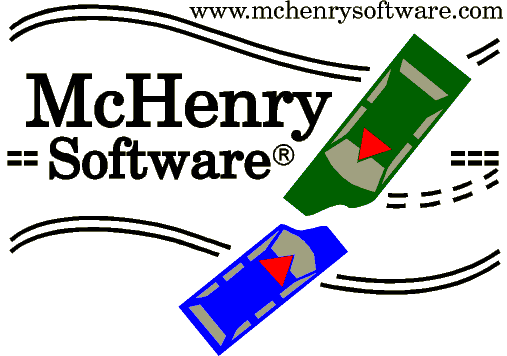

| Homepage
|
McHenry Consultants, Inc. prepared 4 technical
papers at
the 1997 SAE Congress. All four papers are included in SAE publication SP-1237 "Accident
Reconstruction: Technology and Animation VII", available as separate
publications, and contained in the 1997 SAE Transactions. Call or
visit SAE at (412-776-4841) to obtain copies of
the papers or book.
The 4 papers by McHenry Consultants, Inc. are as follows:
Please also see
Effects of Restitution in the Application of Crush Coefficients, SAE Paper 97-0960
Abstract
Effects of restitution on damage interpretations are compounded by the fact that restitution reduces the residual deformation while increasing the total impact speed change. This paper presents a revised analytical procedure to include restitution effects for the CRASH program and refinements to the restitution modeling within the SMAC program. The conversion of vehicle impact test results into inputs for the two revised programs is also included. The effects of the refinements to the damage analysis procedures on reconstruction results are illustrated by direct comparisons with corresponding results produced by the original SMAC and CRASH programs and with measured data from full scale vehicle impact tests.
Questions and Answers related to the paper Paper in PDF format
RICSAC-97 - A Reevaluation of the Reference Set of Full Scale Crash Tests, SAE Paper 97-0961
Abstract
Research performed in the 1970's revealed significant limitations in the available documentation of vehicle crush information and trajectory spinout information. As a result a series of fullscale crash tests were performed which became known as the Research Input for Computer Simulation of Automobile Collisions (RICSAC) crash tests.
Previous research using the RICSAC test results, particularly in relation to the validation of accident reconstruction computer programs, has varied widely in acceptance, interpretation and presentation of the RICSAC test results.
This paper presents a detailed review and decipherment in useable form of the original 12 crash tests that were performed within the RICSAC program. A new method of analyzing accelerometer data from arbitrary sensor positions, on the basis of discrete measures of the vehicle responses rather than complete time-histories, is defined. A discussion of previous research which included reference to the RICSAC test results as a measure of the validity of reconstruction computer programs is included.
SMAC-97 - Refinement of the Collision Algorithm, SAE Paper No. 97-0947
Abstract
The Simulation Model of Automobile Collisions (SMAC) computer program, developed in the early 1970's, includes a complex collision algorithm for monitoring, detecting and modeling the collision interactions of motor vehicles. A detailed review of some aspects of the logic, rationale and, in particular, limitations of the original SMAC collision algorithm is presented.
This paper presents refinements in the definition of the collision interface, the definition of collision type, the vehicle proximity and collision detection logic, and the form of supplementary impulsive constraints on relative motions.
The effects of the modifications of the SMAC algorithm on reconstruction results are presented in the form of direct comparisons of results obtained with the original and modified algorithms.
CRASH-97 - Refinement of the Trajectory Solution Procedure, SAE Paper No. 97-0949
Abstract
The trajectory solution procedures of the original CRASH program included both the SPIN routine and an exploratory trajectory simulation option to approximate and refine the linear and angular velocities at separation. The resulting separation speeds were then used to determine the impact speeds by means of application of the principle of conservation of linear momentum .
This paper presents a detailed review of the logic, rationale and limitations of the trajectory solution procedures of the original CRASH program and discusses a number of refinements including: incorporation of the principle of conservation of angular momentum, approximations of the effects of changes during collision in the positions and orientations of the two vehicles and of the effects of external forces and moments that act on the two-body system during the collision, and adaptations of optimization techniques for error reduction and convergence in iterative solutions.
The overall effects of the refinements to the CRASH trajectory algorithm on reconstruction results are illustrated by direct comparisons of results with SMAC reconstructions of full scale collision tests.
Questions and Answers Related to the Paper Paper in PDF format
�McHenry Software, Inc,